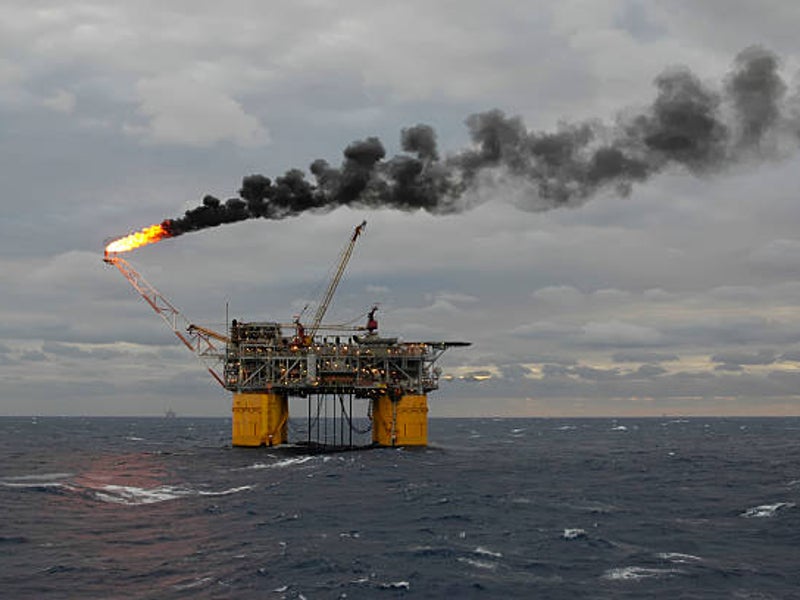
In a limited space, such as on offshore vessels, the often-hyped internet of things (IoT) is in its prime. IoT systems rely on fitting monitoring devices to equipment, tools, machines, and quarters, to relay information on their condition, environment, or location. Management software can then cut through this data, hypothetically optimising operations offshore.
However, the challenging offshore environment also prevents the easy fitting of sensors used so frequently in other energy sectors. Offshore equipment requires high standards of risk mitigation for standard threats, such as electronic safety or overheating. Beyond this, the ultimate risk of explosion looms, but two Norwegian companies hope they now have a solution to this.
Sensor company Disruptive Technologies has worked with explosion risk management technology company Ex-Tech to develop the “world’s smallest sensors for use in explosive atmospheres”.
In April, Ex-Tech fitted the sensors aboard China Oilfield Services’ (COSL’s) floating production, storage, and offloading vessel Innovator. During regular maintenance, the company fitted 400 temperature and humidity sensors to the vessel. Installation reached previously inaccessible junction boxes and floodlights, feeding data back to COSL’s Inspection maintenance system.
This trial aims to measure the reduction in downtime and optimise maintenance schedules around data from the sensors. Jan Holm, CEO of Ex-Tech, told us what the company has learned from its “ex-sensors” in the COSL trial, and how the internet of things can change staffing offshore.
Matt Farmer (MF): Internet of things sensors can give data on almost any environmental factor. But which variables make the biggest difference?

US Tariffs are shifting - will you react or anticipate?
Don’t let policy changes catch you off guard. Stay proactive with real-time data and expert analysis.
By GlobalDataJan Holm (JH): Temperature and humidity variables have so far produced the biggest impact on cost. These can alert to critical conditions which, without smart sensors, would need regular monitoring. Offshore, monitoring would be both a highly resource-intensive and dangerous procedure and requires additional people on the rig, which is extremely costly and time-consuming. Smart sensors allow rig owners to undertake these inspections remotely, reducing costs and saving time.
MF: Similarly, which industrial systems can gain the most from sensor monitoring?
JH: Sensors allow the remote monitoring of electrical components where highly trained electricians, with appropriate certifications, are usually required. In particular, explosive environment inspection systems are key areas that need to be monitored closely for humidity. Humidity is a critical indicator, as it leads to the corrosion of vital equipment. This is both dangerous and highly resource-intensive when the production rig is offshore and in operation.
Explosive environment inspection systems are also often situated on challenging sites, and with electrical components inside the junction boxes, it’s vital that these remain free from corrosion. Manual inspections mean opening the box, which can lead to an imperfect seal when re-closing, leaving small openings for air and humidity and ultimately increasing the risk of corrosion. Our sensors provide exact statuses from all relevant ignition sources that are complex, costly, and risky areas to access.
Variation in temperature is a strong indicator for detecting errors and ensuring that a component’s integrity is maintained. Any significant reduction in performance can indicate the need for equipment to be replaced.
MF: What have you learned from the COSL Innovator project so far?
JH: So far, there have been some solid insights into the need for equipment replacement in the initial phase of our journey. Corrosion under insulation is one of the most challenging and costly conditions to detect – Equinor claims to spend nearly one billion dollars on the cost of maintaining their pipes to avoid and detect corrosion.
It’s currently done by dismantling pipes and manually inspecting them for corrosion. The sensors have already highlighted the need for replacement of equipment with far fewer man hours than current methods of detection.
MF: How much impact can sensors have on decreasing downtime, maintenance costs, or callouts?
JH: Smart explosive environment-certified sensors allow the monitoring of hundreds of components from a distance and can provide valuable information to workers offshore and identify any issues that may need to be addressed in person. The capability for sensors to communicate with offshore teams significantly reduces the need for on-site teams and will consequently reduce the number of people on board.
Whilst we have no data from the COSL project yet, there are high expectations for the return-on-investment from this project as we can already see the resources the sensor-based system is replacing. COSL expects to save thousands of hours on maintenance using the sensors, equating to millions of dollars in savings.
COSL also has a goal of decreasing the number of people on board (POB) by 25%. The COSL Innovator has 52 POB today, and the goal is to reduce this to 44. Through reducing the need for extremely costly manual inspections, COSL hopes to both reduce the number of POB and see a significant reduction in travel and accommodation costs.
MF: What infrastructure do your sensors need to be able to communicate with onshore teams?
JH: With preventative maintenance programs and software solutions such as SAP, IFS, and Star, operators and rig companies should already have the infrastructure in place. This infrastructure can be used for the data from the ex-sensors to be funnelled into their backend systems that monitor, set, and plan working orders and schedules.
The data from the sensors is collected and transmitted every 15 minutes to DT Cloud Connectors (gateways) that pass it to the cloud through an Ethernet connection. The Inspection system, which COSL uses for all inspections and operations, integrates the sensor data in its reports and sends notifications to the operators.



